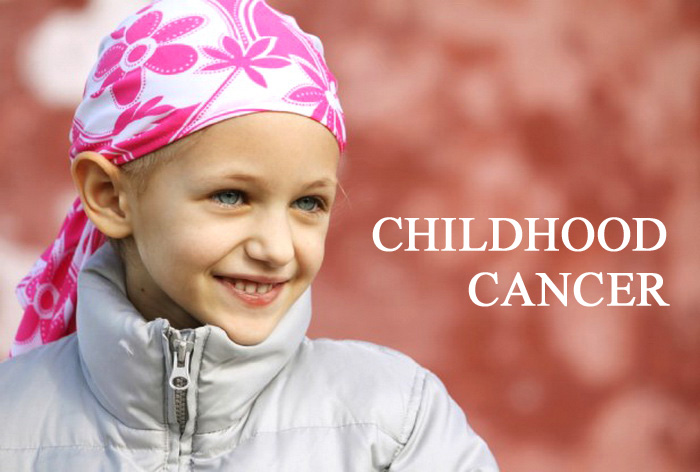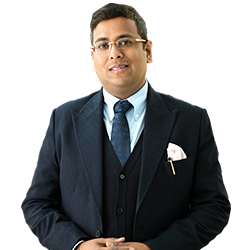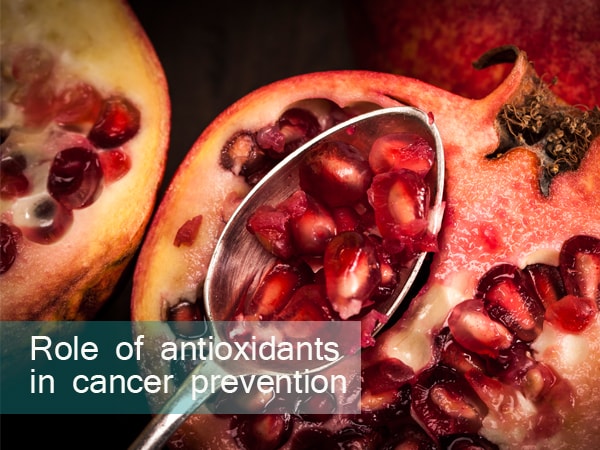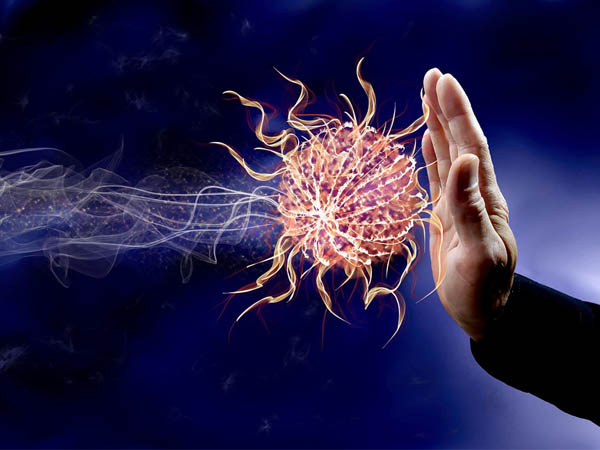
Posted in: Cancer by Dr. Tarang Krishna Posted Date: 30 Jul, 2020
Cancer is a deadly disease and can affect people of all ages, including children. Parents are simply not prepared to deal with the physical and mental trauma associated when they hear the news that their child may have cancer.
It is also essential for parents to understand that cancer types of children are different from the types that exist in adults. So, let us start with understanding childhood cancer.
What is childhood cancer?
Childhood cancer is a term that describes all cases of cancers that can occur in newborns and children up to the age of 15 years. Even with all the data that we shared with you earlier, paediatric cancer remains a rare phenomenon, especially in developing countries like India. It is different from adult cancer in several ways, including growth, spread, signs and symptoms, treatment and its response. The most common types of childhood cancer are Leukaemia, lymphoma, neuroblastoma, brain cancer and bone cancer, amongst other. We will discuss these and different types in the next section.
Types of childhood cancer
We have already mentioned the most common types of childhood cancer; let us get straight in discussing them one by one
- Leukaemia: This is one of the most types of cancer that is found in children. It affects the bone marrow, which is the core of the longest bones of our body. It is the part of the body where the production of platelets, white blood cells (WBC), and red blood cells (RBC) takes place. The primary purpose of platelets is to stop bleeding after an injury. White blood cells help in fighting infection, while red blood cells are responsible for carrying oxygen to different parts of the body. Now the bodies of children with Leukaemia experience the production of immature and abnormal white blood cells that are incapable of fighting infection.
When these immature white blood cells become more than their healthy counterparts, they allow different types of microorganisms, including bacteria and viruses, to enter the body and cause havoc. These abnormal white blood cells grow rapidly and eventually become more than platelets and red blood cells as well. So, platelets are no more capable of stopping bleeding, and red blood cells are not able to take enough oxygen to different parts of the body. There are two types of Leukaemia – Acute Lymphoid Leukaemia (ALL) and Acute Myeloid Leukaemia (AML). Doctors often refer to Leukaemia as a systematic disease as it spreads to different parts of the body through the bloodstream that carries the immature and abnormal white blood cells. The other parts of the body it can spread to include kidneys, blood vessels in the spinal cord and brain, ovaries, testicles, and more.
- Brain and spinal cord cancer: These are tumours that develop in the brain and the spinal cord over time. Brain tumours are the second most common of all the other ones. Different types of tumours can cause cancer in the spinal cord and brain. There is a difference in the outlook and treatment of each of these types. Most tumours in the brain are found in the brain stem or cerebellum or other lower parts. The childhood cancer symptoms of this type include nausea, headache, double or blurred vision, trouble in working with objects, trouble with walking, dizziness, and vomiting. The formation of cancerous tumours in the spinal cord is not so common, both in adults and children. Let us take a look at the four types of brain tumours depending on the cancer cells that cause the disease.
- Brain-stem gliomas are the first type that occurs in the base on the brain. They attack the part of the brain that controls breathing, swallowing, heart rate, and other functions.
- Astrocytomas come from the brain’s supportive tissues. These tumours are either too aggressive and can spread at a faster rate in another part of the brain or are quite slow in their growth and may take years to spread.
- Ependymoma occurs in the brain’s ventricles’ lining. The ventricles are responsible for producing a fluid that provides cushioning to the spinal cord and the brain. In the presence of an ependymoma, this fluid fills the spine and brain with cancer cells.
- Primitive neuroectodermal tumours are mostly found in children. These tumours come from primitive nerve cells.
- Lymphoma: This is a type of cancer that affects the immune system. It attacks the lymphoid tissues, including lymph nodes, tonsils, and other glands in the body. The healthy lymphoid tissues get outnumbered by abnormal white blood cells and lymphoma cells. The body loses its ability to fight infections that are caused by viruses and other foreign bodies. Other parts of the body that can have lymphoma cells include the spleen, bone marrow, and liver. The symptoms of this cancer depend on the part of the body that it attacks.
- Bone cancer: Bone cancers are most common in teens and older children; however, they can arise at any age. There are two types of childhood bone cancers.
- Osteosarcoma is mostly found in teens and occurs in bones that are growing quicker than other bones – bones at the end of the arm or leg. Arm or leg pain in childhood cancer is a common symptom. Swelling in the affected area is also a sign.
- Ewing sarcoma is a lesser-known cancer of the two. It is common in young teens. The areas that mostly get affected by this type of cancer include shoulder blades, ribs, pelvic bones, and leg bones. Symptoms are the same as the other type of bone cancer.
- Neuroblastoma: This cancer mostly occurs in the adrenal gland and is characterised by the excessive growth of nerve cells that aren’t matured yet. It can also arise in nerve tissues in the abdomen, spine, or chest. This cancer can prevent the affected areas from functioning properly. It can spread to other parts of the body, including liver, skin, lymph nodes, and brain.
- Thyroid cancer: This type of cancer arises from the abnormal growth of thyroid tissue that hasn’t properly matured yet. It is found in the middle of the neck in the form of lumps. It prevents the thyroid’s normal hormone production, which can disrupt functions like body temperature, heart rate, metabolism, and blood pressure. Some of the areas that this type of cancer can spread to include bones, lungs, lymph nodes, and the brain.
Childhood cancer- Risk factors
Properly understanding the risk factor of cancers in children is a very tough job. The reason being, there are too many types of cancers that are found in children, and most of them are quite rare. The research done to study these cancers isn’t also too fruitful because of these reasons. However, some factors can contribute a great deal to increasing the risk. We are listing down a few factors that can increase the risk. However, most children may not be affected by any of these. Also, there is no reason to believe that children affected by the risk factors that we are going to mention will always develop cancer.
- Exposure to infections: The Epstein Barr Virus or EBV infects many children at an early age. In most cases, EBV doesn’t cause any symptoms. In some cases, though, EBV can lead to glandular fever in young adults and teenagers. This fever isn’t too pleasant; however, it subsides in a few weeks. If children have EBV, it doesn’t mean they will develop cancer at a later stage in their lives. But once a person gets EBV, they remain a carrier of this infection throughout their life. It happens very rarely that EBV leads to the development of cancer.
- Medical conditions: Several medical conditions can increase the development of cancer in children. There are 10-20 times more chances of the development of Leukaemia in children with Down’s syndrome than others.
- Exposure to radiation: Radiotherapy is one of the cancer treatments in which radiation is used to treat cancer. Children undergoing radiotherapy are at risk of developing a different type of cancer at a later stage in their lives. However, this risk outweighs the risks that their original poses to their health if not treated properly.
- Genetics: One of the rarest types of cancer is retinoblastoma. Some children have a changed retinoblastoma or RBI gene since their birth. This change to their RBI gene could either occur in the womb or could be something they have inherited from of the parents. Retinoblastoma cancer is quite common in children that have a changed RBI gene.
Childhood Cancer: Symptoms and Signs
Childhood cancer symptoms are tough to recognise. Common injuries and illness that occur in childhood can often mask cancer symptoms in kids. Some of the early signs of childhood cancer that you shouldn’t ignore if they persist include
- Continued, unexplained weight loss
- Headache, often with vomiting
- Increased swelling/pain in the bones, joints, back, or legs
- Development of a lump or mass
- Development of excessive bleeding/rash
Other childhood cancer symptoms include
- Unexplained loss of energy or paleness
- Unexplained illness that persists
- Sudden changes in the eye or vision
- Continuous pain in one area of the body
Childhood Cancer: Diagnosis
When diagnosed early, childhood cancer has more chances of responding to treatment. Early diagnosis can also result in greater chances of survival, less intensive and less costly treatment, and less pain/suffering. Early detection of cancer can help in significantly improving the lives of children with cancer. Delays in care can often be detrimental. Correct diagnosis is as important as it is crucial in choosing the most effective treatment modality or regimen for a particular type of cancer. Different types of cancer respond differently to the types of treatment options available. There are three main components of early diagnosis:
- Family awareness and care accessibility
- Diagnosis and staging
- Treatment accessibility
Early diagnosis is very important in every setting or location. It significantly improves the chances of survival in most types of cancers. Programmes to create awareness about early diagnosis are run in almost every country. These are collaborative efforts of governments, NGOs, civil societies, and parent groups.
Childhood cancer: treatment
- Chemotherapy: The treatment kills cancer cells with the help of different types of drugs available for this purpose. The type of drugs used in cancer treatment depends on the type of childhood cancer that is to be treated. In most cases, a combination of drugs is used in the treatment. Neoadjuvant chemotherapy often helps in cutting down the size of tumours before surgery. Adjuvant chemotherapy is used for killing cancer cells and minimise the chances of reoccurrence. Palliative chemotherapy helps in relieving symptoms if the cure is not possible.
- Surgery: Surgery is often very important in both diagnosis and treatment. It can help in identifying the exact type of cancer and then treating it. Surgery is often the last resort because of its side effects. In some cases, it can damage healthy tissues while removing the tumour. Supportive care or medication may be required for healing in these cases.
- Immunotherapy: This is the most promising out of all the other treatment modalities. Immunotherapy treatment involves the use of oral medicines that work to enhance the natural immunity of the body to fight and kill cancer cells. It focuses on strengthening the immune system that is the first line of defence against any disease. The medicines used in this treatment are made from plant-based extracts and contain no chemical or steroid that can harm the body. This is why this treatment has no side effects. For better results, immunotherapy can be used in conjunction with other treatment modalities, such as chemotherapy.
- Radiotherapy: It involves the use of high-energy radiation towards the affected areas of the body to kill cancer cells. Like chemotherapy, radiotherapy is also used for various purposes. Adjuvant radiotherapy is used to kill cancer cells that surround the tumour. This helps in preventing the reoccurrence of cancer. Neoadjuvant radiotherapy is used to reduce the size of the tumour before surgery. Palliative radiotherapy is used to alleviate symptoms in cases where the cancer isn’t curable.
Other treatments include stem cell transplant/bone marrow transplant, precision medicine, and complementary therapies that are used alongside conventional treatments.
Importance of early detection of cancer
Hearing the words that your child has cancer can be a horrifying experience. The experience can leave parents feeling guilty and overwhelmed. However, the most important thing to remember is that parents are not to blame. Sometimes it can take months and years for the signs of the disease to appear, and the symptoms are never noticeable. Remember, early detection is the key to finding the right treatment. So, parents need to be more proactive – they shouldn’t take an illness lightly if it persists for longer than usual.
One of the biggest childhood cancer causes is the DNA changes that cells undergo at an early age. The average of children in which cancer is detected is six years. However, this doesn’t mean that it can’t occur in newborns or young adults. Acute lymphoblastic Leukaemia or ALL is the most common out of all the other types of paediatric cancer. However, due to new research and treatments, more than 90% of these cases are curable. The worst thing about childhood cancer is that detecting it early is very difficult. In more than three-fourth of all the childhood cancer cases, it is diagnosed at a stage when it has spread to other parts of the body. This is why so much emphasis is given to early detection. Now that we know the figures behind it, let us now turn our attention to what childhood cancer exactly is, its signs and symptoms, its types, possible risks, and types of treatment available.
Let us now look at a few statistics that will help you understand how quickly paediatric cancer has grown over the years.
Studies reveal that a case of childhood cancer is reported every 3 minutes worldwide. It has also been found that around it is the reason for nearly 90,000 deaths every year across the world. It is more prevalent in developed countries. When it comes to children aged 5-14 years, it is the second-highest causes of death in developed countries. More than two-thirds of the children who are diagnosed with cancer can be treated if they are detected early. More than 80% of cases of childhood cancer take place in developed countries. However, it is not too easy to detect kids cancer because neither parents nor healthcare professionals are aware of the warning signs.
Childhood cancer is a traumatic experience for both parents, the child, siblings and extended family. However, it is not an incurable disease, and parents can take hope from the advanced treatment offered at cancer hospitals under the care of experienced doctors and specialists.







_1552549280.jpeg)